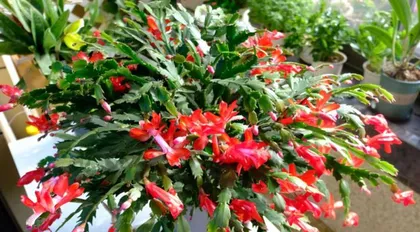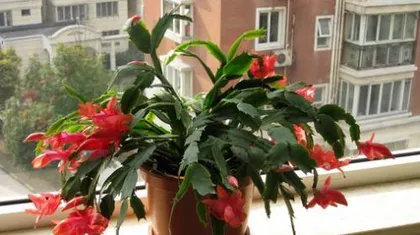As a common ornamental plant, the Christmas cactus is loved by many plant enthusiasts. However, for many people, the growth and care of the Christmas cactus can be a problem. Especially in winter, many people are more concerned about whether the Christmas cactus can grow healthily and bloom indoors. This article will introduce the tips and precautions for getting your Christmas cactus to bloom in winter.

I: Understanding the Christmas Cactus
The Christmas cactus is a plant native to South America and belongs to the Cactaceae family. It grows in tropical rainforests and requires a high-temperature, high-humidity environment. It gets its name "Christmas cactus" because its shape resembles a crab's claw.
II: Suitable Temperature
The ideal growing temperature for a Christmas cactus is between 18-30°C. Therefore, the room temperature in winter needs to be kept within this range. If the room temperature is too low, the Christmas cactus's growth rate will slow down or even stop.

III: Proper Humidity
The Christmas cactus requires a high-humidity environment during its growing period. In winter, the dry indoor climate can affect the growth and flowering of the Christmas cactus. To ensure its growth, the indoor humidity should be increased.
IV: Light
The Christmas cactus prefers bright but not intense light. In winter, sunlight is scarce, so it is especially important to pay attention to the indoor light conditions. If there is insufficient sunlight, artificial lighting can be used.
V: Water Management
The Christmas cactus has a high demand for water. In winter, the lower room temperature slows down water evaporation, which can easily lead to water accumulation and root damage. Before each watering, wait for the topsoil to dry out.

VI: Soil and Fertilizer
The Christmas cactus prefers loose, well-draining soil, often using materials like perlite and chopped ferns as a soil medium. In winter, due to slower growth, excessive fertilization is not necessary. If fertilization is needed, a high-phosphorus, low-nitrogen fertilizer should be used.
VII: Pest and Disease Prevention
The Christmas cactus is susceptible to pests and diseases in winter, such as powdery mildew and aphids. It is necessary to regularly check the plant's health and take appropriate preventive and control measures.
VIII: Methods to Increase Indoor Humidity
To maintain the growth of the Christmas cactus, you can increase indoor humidity through the following methods:
1. Use a humidifier;
2. Place a water tray under the pot;
3. Mist the air to increase humidity;
4. Place the Christmas cactus on plaster or rock wool soaked in water.
IX: Suitable Lighting Conditions
When there is less sunlight in winter, artificial lighting can be used. Typically, ultraviolet or fluorescent lamps can be chosen, providing 6-8 hours of light per day to promote the growth and flowering of the Christmas cactus.
X: Correct Watering Method
In winter, the Christmas cactus grows more slowly, so watering should be reduced appropriately. Before each watering, wait for the topsoil to dry out. At the same time, avoid getting water on the leaves to prevent rot.
XI: Proper Ventilation
The Christmas cactus needs plenty of fresh air to maintain healthy growth. In winter, appropriate ventilation is also necessary to keep the indoor air circulating.
XII: Correct Fertilization Method
In winter, due to slower growth, excessive fertilization is not necessary. If fertilization is needed, a high-phosphorus, low-nitrogen fertilizer should be used. Fertilize once every 1-2 months.
XIII: How to Avoid Pests and Diseases
To prevent the Christmas cactus from being attacked by pests and diseases in winter, it is necessary to regularly check the plant's health and take appropriate preventive and control measures. You can use chemical sprays or biological control agents.
XIV: Misting to Increase Air Humidity
In winter, you can increase indoor air humidity by misting. When misting, be careful not to let water droplets remain on the leaves to prevent rot.
XV:
Caring for a Christmas cactus in winter requires attention to many aspects. Suitable temperature, humidity, light, water management, soil and fertilizer, and pest and disease prevention all need to be mastered. Only by preparing well can you ensure that the Christmas cactus grows healthily and blooms in winter.